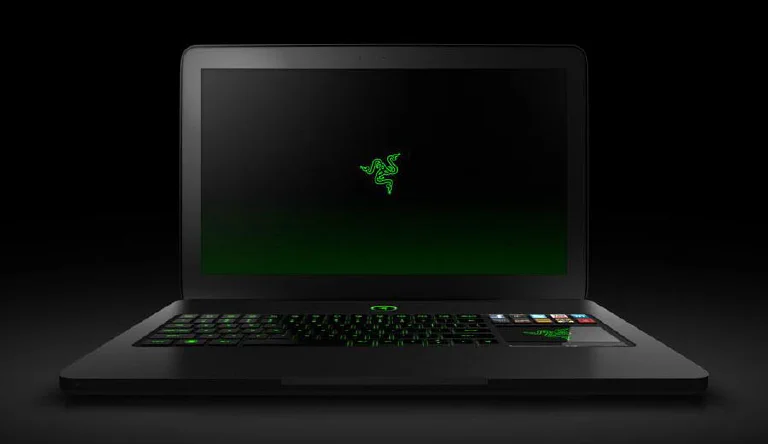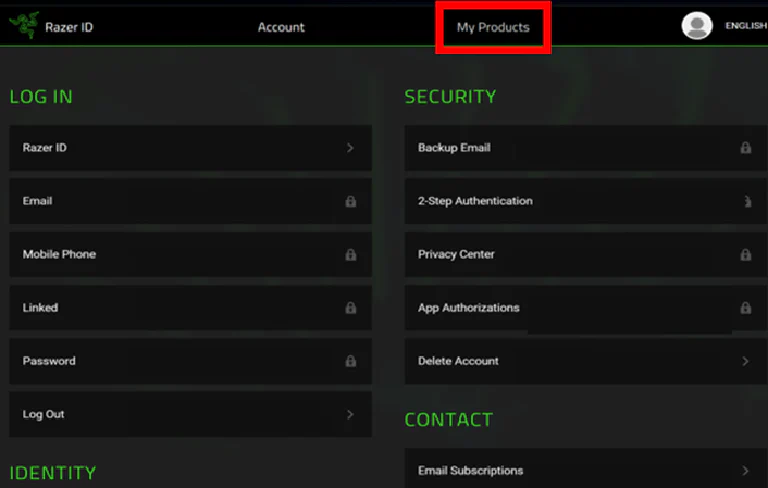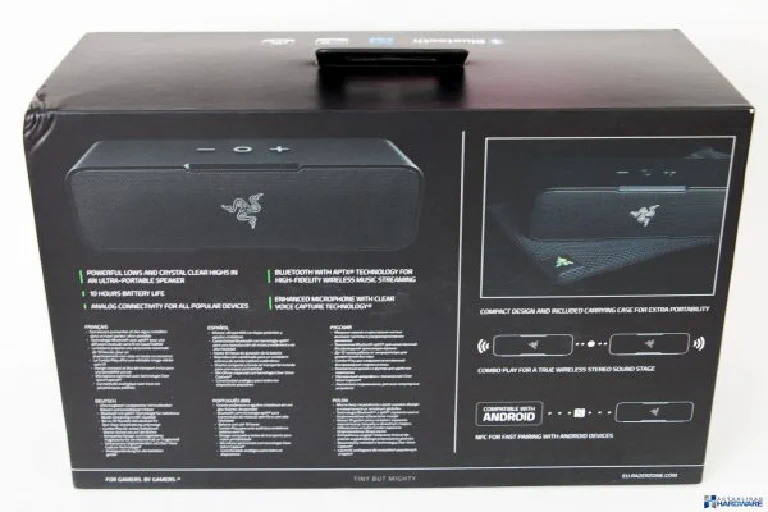As a long-time enthusiast who has spent countless hours with Razer’s gaming peripherals and laptops, I’ve seen their journey from a niche brand to a global icon. That iconic triple-headed snake logo is everywhere in 2025, adorning everything from high-performance mice to powerful gaming laptops. But with immense popularity comes an unfortunate and dangerous problem: a booming market for counterfeit products. These fakes are more convincing than ever, making it incredibly difficult to tell a genuine Razer Basilisk mouse or a Razer Blade laptop from a deceptive knock-off.
I frequently hear a common refrain from anxious buyers: “Where can I go on Razer’s website to type in my serial number and verify if my product is genuine?” It’s a natural question, rooted in a logical desire for peace of mind. And after years of scrutinizing Razer’s official channels, I can tell you definitively: that simple, public serial number lookup tool for authenticity verification does not exist on razer.com.
This guide is my deep dive into this persistent myth. I’ll explain why Razer doesn’t offer such a tool, clarify the true purpose of the pages you might stumble upon, and most importantly, show you the only reliable way to verify your Razer product’s authenticity: through their official product registration process. Protecting your investment and ensuring you get the genuine Razer experience starts right here.

The Illusion of the ‘Serial Number Checker’: Why It Doesn’t Exist
Many users, understandably, look for a simple “serial number checker” page on a manufacturer’s website. They expect to enter a number and get an immediate “genuine” or “fake” confirmation. My research confirms that Razer does not provide this public-facing tool for general authenticity checks.
Why not? From a brand’s perspective, creating such a tool can introduce more problems than it solves:
- Security Risks: A public checker could be exploited by counterfeiters to validate their fake serial numbers or harvest real ones.
- Gray Market Issues: Razer has regional distribution and pricing. A simple checker doesn’t account for products sold outside their intended region or through unauthorized channels, which complicates warranty and support.
- It’s Not Foolproof: A serial number alone doesn’t prove authenticity if the fake is simply using a real, stolen number. The overall product inspection and proof of purchase are also vital.
Instead, Razer integrates authenticity verification into a broader process: product registration.
Understanding Razer Care: The Paid Warranty, Not the Authenticity Check
One common point of confusion is Razer’s “Razer Care” service. Many users trying to verify their product stumble upon the razer.com/razercare/warranty page and see a field for a serial number. They incorrectly assume this is the general authenticity checker.
My analysis reveals that this page is exclusively for verifying the status of a Razer Care plan, which is Razer’s optional, paid extended warranty service.
- What is Razer Care? It’s an additional protection plan you can purchase for your Razer device, extending the standard limited warranty for a longer period (e.g., Razer Care Essential for up to 11 months after purchase, Razer Care Elite for 15 days after purchase).
- Its Purpose: The serial number field on the
razercare/warrantypage is there only to allow customers who have already purchased a Razer Care plan to check its activation and expiration date. - The Trap: If you enter the serial number of a product that does not have a purchased Razer Care plan associated with it, the system will simply tell you that the serial number is “not found” or “not eligible.” This does not mean your product is fake; it just means it doesn’t have Razer Care. It’s a common misunderstanding that leads to unnecessary worry.
Beyond the Myth: The ONLY Way to Verify Your Razer Product
So, if there’s no direct serial number checker and Razer Care isn’t it, what’s the actual method? Based on my extensive experience with Razer products, the definitive way to confirm your product’s authenticity is through a successful product registration via your official Razer ID account.
This process links your specific device, identified by its serial number, to your personal account in Razer’s system. If the serial number is valid and has not been previously registered (or if it passes specific internal checks), it will be added to your account, implicitly confirming its genuineness.
My Step-by-Step Guide to Product Registration (Your True Authenticity Check)
Follow these steps carefully to register your product.
Step 1: Locate Your Product’s Serial Number
This is your product’s unique identifier. Its location varies by device type:
| Device Category | Common Serial Number Location |
|---|---|
| Mice | On a sticker on the underside of the mouse. |
| Keyboards | On a sticker on the underside of the keyboard case. |
| Headsets | On the underside of the headband or printed on the ear cup (often under the padding). |
| Laptops (Razer Blade) | On a sticker on the bottom chassis of the laptop. |
| Webcams & Microphones | On the base of the unit or on the back of the device. |
| Controllers | On the back of the controller, often in the center. |
The serial number is typically preceded by “S/N:” and is a combination of letters and numbers. It’s crucial to write it down accurately.
Step 2: Access the Official Razer ID Portal
Always go directly to the source. Open your web browser and navigate to the official Razer ID website. Do not click links from unofficial sources or search results that look suspicious. Phishing sites designed to steal your credentials are a real threat.
Step 3: Create or Log in to Your Razer ID
If you don’t have a Razer ID, it’s free and takes only a few minutes to create. This account will be your central hub for all your Razer products, software (like Synapse), and support. Once logged in, you’ll be on your Razer ID Dashboard.
Step 4: Navigate to Product Registration
On your Razer ID Dashboard, look for a section or link related to “Products,” “Register Product,” or “My Devices.” This is where you’ll input your device’s details.
Step 5: Enter Your Product Details
You will typically be prompted for:
- Product Category: Select the type of device (e.g., “Mouse,” “Keyboard,” “Laptop”).
- Product Name: Choose your specific model (e.g., “DeathAdder V3 Pro,” “BlackWidow V4 Pro”).
- Serial Number (S/N): Carefully enter the serial number you located on your device.
- Product Number (P/N): This is also on the same sticker as the serial number.
- Date of Purchase: Input the date you bought the product.
- Proof of Purchase (Optional but Recommended): You may have an option to upload a copy of your receipt. I highly recommend doing this, as it significantly speeds up warranty claims later.
Step 6: Submit for Registration
Click the “Submit” or “Register” button.
- Successful Registration: If the serial number is valid and the system accepts it, your product will now appear in your list of registered devices. This is your implicit confirmation of authenticity.
- “Invalid Serial Number” Error: This is a major red flag. If you’ve double-checked your entry and still get this, it’s highly likely you have a counterfeit product.
- “Already Registered” Error: This means the serial number has already been tied to another Razer ID. This could indicate you’ve purchased a used product, a stolen item, or a gray-market product. While not necessarily a “fake,” it can complicate warranty support.
The Ultimate Payoff: Why Registering is a Must-Do for Every Razer Owner
Successfully registering your Razer product isn’t just a checkmark; it’s a critical step that unlocks the full value of your purchase.

- Warranty Activation & Support: This is paramount. Your warranty period officially begins with your purchase date, but having the product registered to your account drastically simplifies the process if you ever need support or an RMA (Return Merchandise Authorization). Razer’s support team can immediately see your device and its warranty status, streamlining your request.
- Access to Razer Synapse & Chroma RGB: Most high-end Razer peripherals rely on the Razer Synapse software for customization. Synapse links to your Razer ID and recognizes your registered devices, unlocking features like custom macros, DPI settings, advanced key remapping, and the iconic Razer Chroma RGB lighting effects. Without registration, you might be limited to basic functionality.
- Firmware Updates & Driver Support: Registered devices are often prioritized for notifications about critical firmware updates and driver releases, ensuring your gear is always running at peak performance and security.
- Exclusive Benefits: Registered users may gain access to exclusive promotions, beta programs, and community events, enhancing your overall experience as a Razer fan.
Common Traps & Red Flags: What Else to Look For
Beyond the serial number, my experience tells me there are other tell-tale signs of a fake. You might want to refer to our other guide, for a full visual guide on spotting counterfeits, but here are some key takeaways:
- The Packaging Quality: Genuine Razer packaging is a work of art—thick, premium cardboard, sharp printing, and meticulous internal organization. Fakes often have flimsy boxes, blurry logos, mismatched fonts, and even spelling errors.
- The “Feel” of the Product: Razer prides itself on build quality. A genuine product feels solid, with no creaking plastic, loose buttons, or visible seams. Counterfeits often use cheaper plastics, have rough edges, and may feel unusually light or heavy. Even the cable quality matters—Razer uses high-quality braided cables.
- Software Compatibility: If a Razer device doesn’t show up in Razer Synapse, that’s an immediate red flag. While there can be glitches, a consistent failure to be recognized by the official software is a strong indicator of a non-genuine product.
- Suspicious Pricing: If a deal seems too good to be true, it almost certainly is. Authentic Razer products are premium-priced. A deep discount might happen on a refurbished item or during a major sale, but a brand-new item at half price or less is highly suspicious. For example, if you see a Razer gaming mouse at an unbelievable price, proceed with extreme caution.
- Unauthorized Sellers: Always purchase from Razer’s official website or authorized retailers. Third-party marketplaces are rife with fakes. A product listed on a major marketplace doesn’t guarantee authenticity unless it’s explicitly sold by an “Official Store” or a highly reputable, long-standing seller with extensive positive reviews specifically for that brand. If you’re building a custom PC and buying peripherals, make sure your sources are trusted.
Answering Your Top Questions (FAQ)
Q: My serial number is showing as “already registered.” What do I do? A: This often means you bought a used, refurbished, or gray-market product. If you bought it new, contact your seller immediately and provide them with this information. If they refuse to help, open a dispute with your payment provider. You can also contact Razer Support, providing them with your serial number and proof of purchase; they may be able to advise, though warranty may not be transferable.
Q: Can I get support for a fake Razer product? A: No. Razer’s support and warranty services are exclusively for genuine products. If you have a counterfeit, you’ll need to seek recourse from the seller.
Q: How do I know if a reseller is authorized? A: Razer provides a list of authorized online and retail partners on its official website. Always check this list before making a purchase from a new vendor.
Q: Does installing Razer Synapse automatically verify my product? A: Synapse will recognize genuine products that are connected and working. However, the definitive verification is linking the product to your Razer ID account through the registration portal. Synapse relies on that registration.
The Final Word: Your Shield of Authenticity
In the complex world of gaming hardware, the risk of encountering a fake is real. But armed with the right knowledge, you can easily protect yourself. Stop wasting time looking for a non-existent serial number checker. Instead, focus on the power of product registration. Taking these few simple steps ensures that the Razer gear on your desk is not just a stylish peripheral, but a genuine, high-performance tool backed by the brand’s legendary quality and support. Your gaming experience deserves nothing less.
